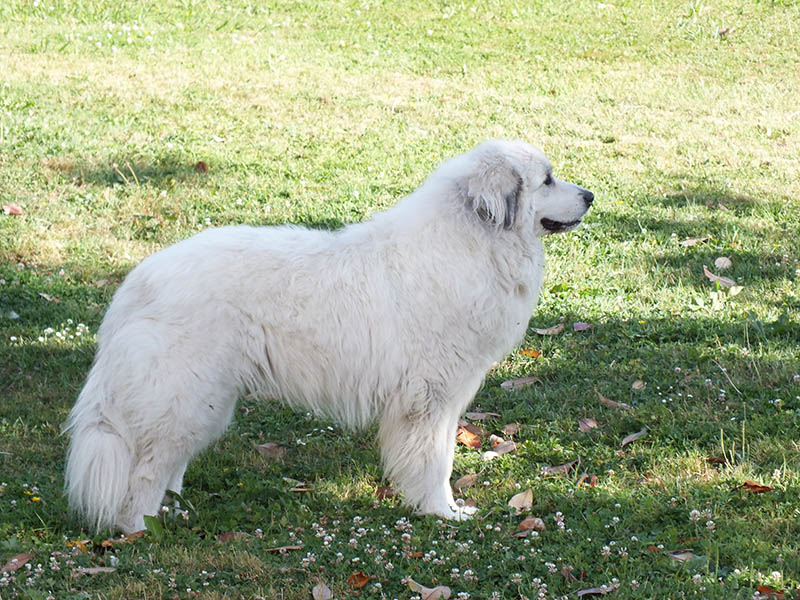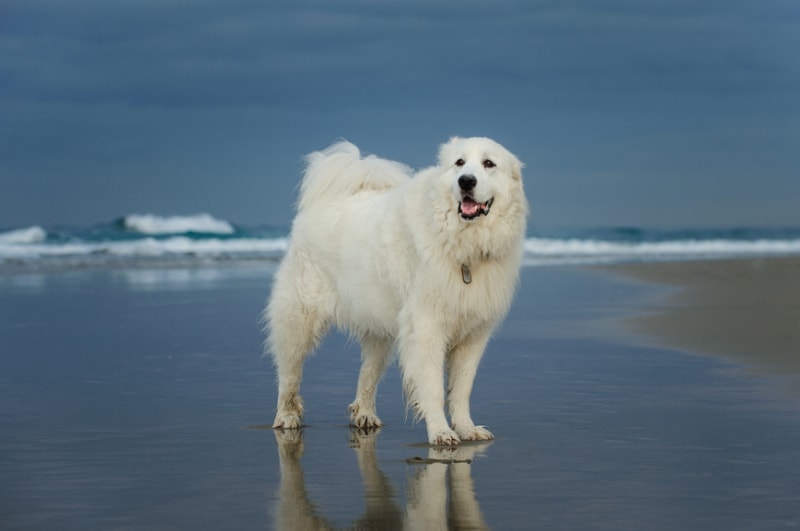How Much Exercise Do Great Pyrenees Need? Breed Necessities & Facts
By Ed Malaker
Updated on

Click to Skip Ahead
The Great Pyrenees are great pets that are affectionate and protective. However, due to their large size, many people worry about how much exercise they need. Fortunately for busy families, they only have moderate activity needs compared to many other breeds, and they can be happy with 30–60 minutes daily. Keep reading for the different factors that influence their exercise needs and a few tips for establishing a healthy routine so you can keep your pet healthy and happy.
The Great Pyrenees Breed
Great Pyrenees, or Pyrs, are large, fluffy dogs with a rich history as livestock guardians. This is a large breed, with males typically weighing over 100 pounds. Their thick double coat provides significant insulation, making them well-suited for colder climates. Breeders originally bred them to guard livestock against wolves, bears and humans in the mountainous regions of France. As a result, they possess strong protective instincts but are generally calm, patient and affectionate with their families. Their fur is usually white, but they can also have tan, gray, red, and other colored markings.

Factors Influencing Exercise Needs
Age
The age of your Great Pyrenees plays a significant role in their exercise requirements. Puppies have more energy and require frequent, short bursts of play and activity to support their physical and mental development. However, it is very important that you don’t over-exercise a puppy. Large breed dogs like the Great Pyrenees will take between 18-24 months to be fully grown. During this time, their joints and growth plates are at risk of damage if they do too much. When you take your puppy to the vet for their puppy vaccinations, ensure you have a discussion with your vet about an appropriate exercise routine for your new companion.
Once fully grown, adult Pyrs are generally more moderate in their activity levels, while senior dogs may have various limitations due to age-related issues.

Temperament
The temperament of your Great Pyrenees will influence the type of exercise that they enjoy, so you may need to experiment to find what works best for your pet. Some Pyrs enjoy interactive games, while others prefer leisurely walks and relaxation.
Health Status
The health of your Great Pyrenees is a crucial consideration. Dogs with underlying health conditions or joint problems might require tailored exercise routines. Always consult your veterinarian to ensure that an exercise program meets your dog’s health needs.

Living Environment
The dog’s living environment impacts their exercise requirements. Pyrs living in apartments might need more structured exercise than those with access to large yards. Lack of space might necessitate more frequent regular walks and mental stimulation to keep them from feeling cooped up.
Tips for a Better Exercise Routine
1. Daily Walks
Pyrs benefit from daily walks to help them stay in shape and engage their senses. Aim for at least one or two 30-minute walks each day. This routine also enables them to experience different environments and interact with other dogs and people, which can help them feel more comfortable in new situations. It is important to make sure your dog is fully vaccinated against infectious diseases before taking him or her out to play with other dogs.
2. Interactive Play
Incorporate interactive play sessions into your dog’s routine. Games like fetch, tug-of-war and puzzle toys can stimulate their mind and keep them physically active. It also helps them form a stronger bond with you.
3. Off-Leash Time
If you have a secure area, give off-leash time to your Great Pyrenees. Their guarding instincts will encourage them to explore their surroundings, and this freedom can be mentally enriching.

4. Hiking and Adventures
The Great Pyrenees often enjoy outdoor adventures. Their endurance and love for nature make them a great companion for long walks and hikes.
5. Socialization
Regular socialization is vital for Pyrs to maintain good behavior around other dogs and people. Consider visiting dog parks or having playdates with other well-behaved dogs.
6. Monitored Intensity
While Pyrs require exercise, avoid excessive high-impact activities such as ball throwing. This is especially important during their puppyhood and senior years. Due to their large size, this type of exercise can strain their joints and lead to osteoarthritis.
Signs That Your Dog Is Getting Enough Exercise
Contentment
A satisfied and content demeanor, characterized by relaxed body language and a calm disposition, is a good sign that your dog has exercised enough for the day.
Healthy Weight
Maintaining a healthy weight is essential. An exercise routine that aligns with their needs can prevent weight-related issues. A good sign that your dog is getting enough exercise is if they are within recommended weight limits for their size and age.

Good Behavior
Adequate exercise often leads to improved behavior, as it helps dogs to release excess energy and stay mentally engaged. If your dogs are not digging up the garden or tearing up the furniture, they are likely getting enough exercise.
Frequently Asked Questions
Do Pyrs Enjoy Swimming?
This seems to vary significantly within the breed. Some Pyrs enjoy swimming and others do not. It depends on the individual dog. If you introduce them to water gradually and ensure their safety, they might accept swimming as an additional form of exercise.
Are Pyrs Good With Other Dogs at Dog Parks?
Pyrs are protective and might exhibit defensive behavior around unfamiliar dogs. Proper socialization from a young age and gradual exposure to different dogs can help them behave well at dog parks.
Summary
Your Great Pyrenees will need 30–60 minutes of exercise each day to help keep them happy and healthy. You can break this up into several activities, including hiking, interactive play, off-leash time, socialization with other animals, and even swimming. Several things can influence their exercise needs, including age, health, temperament, and living environment, so you must adjust and monitor your activities as needed. You will know that your dog is getting enough exercise if they maintain a healthy weight and have relaxed body language throughout the day without misbehaving.
See also:
- Do Great Pyrenees Have Webbed Feet? Interesting Breed Facts
- How Long do Great Pyrenees Live? Vet Reviewed Average Lifespan, Data & Care
Featured Image Credit: Mikhail Farina, Shutterstock













